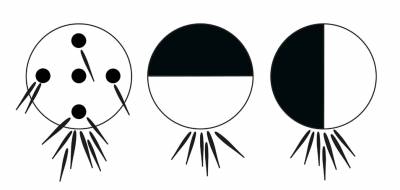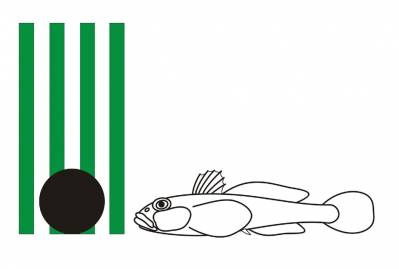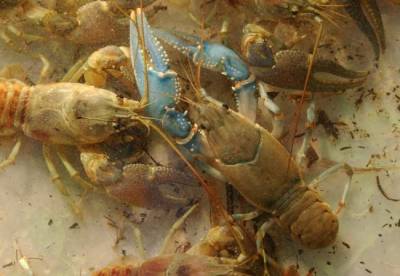Kohda & Watanabe (1986, 1988) have
demonstrated that vertically striped fish, such as Coreoperca kawamebari and Macropodus
chinensis, prefer to rest at the vertically striped background. Of two horizontally
striped fish, Melanochromis auratus and Barbus titteya, M. auratus choose the horizontally striped
background, whereas B. titteya are
indifferent. At the same time, stripeless Acheilognathus limbata are slightly drawn towards the vertically
striped background, but stripeless Carassius
auratus show no preference (Kohda & Watanabe, 1988).
Fig.1 shows how stripeless round goby, Neogobius melanostomus, and other gobiids rest near the
vertically grating background with green stripes and an additional middle-size
black disc (20 mm diameter) attached at the foot of this background. If an
artificial background is sufficiently long (longer than 10-15 fish lengths),
gobies and other bottom fish, like common gudgeon, Gobius gobius, or common ruffe, Gymnocephalus cernuus, will rest usualy near the black disc (our
observations).
You can carry out own experiments attaching
the same or similar discs to the wall of your terrarium at the level of floor.
In these cases, small rodents will respond to these stimuli as an entrance to
the shelter. The same disc attached horizontally to the tip of vertical stick above
the water plays another function. Now all dragonflies and damselflies flying
beside will turn towards the disc to use it as an appropriate landing site.
Males of round and some other gobies
become black in the reproductive period (Meunier et al., 2009). In this period,
black discs or balls induce aggressive behaviuor in males and attract females
(our data). Reproductive red-belly males of three-spined stickleback, Gasterosteus aculeatus, respond to
various stimuli (Darkov, 1980). In particular, they display aggressive responses
to red geometric figures and avoid black ones.
Silvery lacustrine bleak, Leucaspius delineatus, aggregate with silvery
squares and silvery fish-like flat models (Darkov, 1980). They actively avoid black squares and other
black models, but slightly aggregate with live black molly, Poecilia sphenops.
On the other hand, you can use black
discs or discs with the contrast edges and spots to bring together early fry of
mouthbreeding Mozambique
tilapia, Tilapia mossambica (Fig.2: Baerends,
1957).

When the
foregoing vertically striped background comes in motion, fish follow
more or less stable, depending on their ecology and locomotion, the moving background. In
general, this behaviour, named optomotor,
is innate, weakly dependent on the shape of visual stimuli (stripes or other
figures, see data by Shaw
& Sachs, 1967, for schooling fish, Menidia
menidia) and weakly
modified by the vital experience of animals. To study optomotor responses, fish are
usually placed into the circular transparent tanks that, in turn, are
surrounded with the rotating striped drums.
...
Read more »






